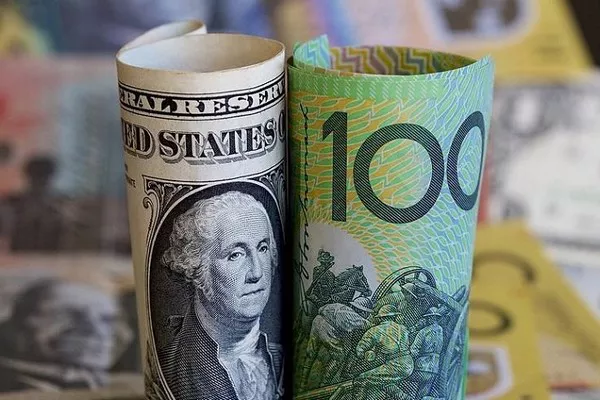In today’s global economy, currency exchange rates play a crucial role in international transactions and personal finances. Understanding how currencies convert from one to another is essential for anyone dealing with cross-border transactions, travel planning, or investment decisions. This article explores the conversion of $600 AUD (Australian Dollars) into USD (United States Dollars), providing insights into exchange rates, factors influencing them, and practical implications for individuals and businesses.
Introduction to Currency Exchange Rates
Currency exchange rates represent the value of one currency in terms of another. They fluctuate constantly due to various factors such as economic indicators, geopolitical events, interest rates, and market speculation. Exchange rates are quoted in pairs, where the first currency is known as the base currency, and the second is the quote currency. For instance, in the AUD/USD pair, AUD is the base currency, and USD is the quote currency.
Understanding $600 AUD in USD
When converting $600 AUD to USD, the exchange rate determines how much USD you will receive for your AUD. Exchange rates can vary from minute to minute, so it’s essential to use current rates when making conversions. Factors influencing the AUD/USD exchange rate include:
Economic Data: Economic indicators such as GDP growth, inflation rates, employment data, and trade balances impact currency strength.
Interest Rates: Central bank policies and interest rate differentials between Australia (RBA) and the United States (Federal Reserve) affect currency values.
Political Stability: Political events and stability in both countries influence investor confidence and currency demand.
Market Sentiment: Speculative trading and market perceptions about future economic conditions drive short-term fluctuations.
Current Exchange Rate and Calculation
As of the latest data available, the exchange rate for AUD/USD is 0.67. Using this rate, we can calculate how much $600 AUD is in USD:
$600 AUD×Exchange Rate=$Amount in USD
Factors Influencing Exchange Rates
Economic Indicators
Economic indicators provide insights into the health of an economy and influence currency values. Key indicators affecting the AUD/USD exchange rate include:
GDP Growth: Strong economic growth typically strengthens a currency as it reflects a robust economy.
Inflation Rates: Higher inflation can erode purchasing power, leading to currency depreciation.
Employment Data: Low unemployment rates indicate a healthy labor market and economic stability, bolstering currency value.
Trade Balances: A country with a trade surplus (exporting more than importing) tends to see its currency appreciate.
See Also: Current AUD Exchange Rate: $10 AUD in USD
Interest Rates and Monetary Policy
Central banks, such as the Reserve Bank of Australia (RBA) and the Federal Reserve (Fed), set interest rates to manage inflation and economic growth. Interest rate differentials between countries affect currency exchange rates:
RBA Policies: The RBA’s decisions on interest rates influence the attractiveness of AUD-denominated assets to investors.
Federal Reserve Policies: Changes in Fed interest rates impact USD strength and global capital flows.
Political Stability and Market Sentiment
Political stability and geopolitical events impact currency values through investor confidence and risk perception:
Political Events: Elections, policy changes, and geopolitical tensions can lead to currency volatility.
Market Sentiment: Investor sentiment and speculative trading influence short-term currency movements.
Practical Implications for Individuals and Businesses
Understanding currency exchange rates has practical implications for various stakeholders:
Travelers and Consumers
Currency Conversion: Travelers need to convert currency for expenses abroad, considering exchange rates and transaction fees.
Budgeting: Fluctuations in exchange rates affect the purchasing power of travelers in foreign countries.
Importers and Exporters
Costs and Pricing: Importers and exporters face currency risk when pricing goods and negotiating contracts.
Hedging Strategies: Hedging against currency fluctuations through financial instruments helps mitigate risk.
Investors and Speculators
Investment Decisions: Investors analyze exchange rates when allocating assets internationally.
Speculation: Speculators trade currencies to profit from anticipated movements in exchange rates.
Conclusion
Currency exchange rates, such as the AUD/USD pair, play a critical role in global finance and everyday transactions. Converting $600 AUD into USD involves understanding exchange rate dynamics, economic factors, and their implications for individuals and businesses. By staying informed about current rates and factors influencing them, stakeholders can make informed decisions regarding international travel, trade, and investments. Currency exchange remains a dynamic field influenced by economic data, monetary policies, and market sentiment, highlighting the interconnected nature of the global economy.
Related Topics:
- Current AUD Exchange Rate: 2000 AUD in INR
- Current AUD Exchange Rate: 5000 AUD in INR
- Current AUD Exchange Rate: 500 AUD in INR


